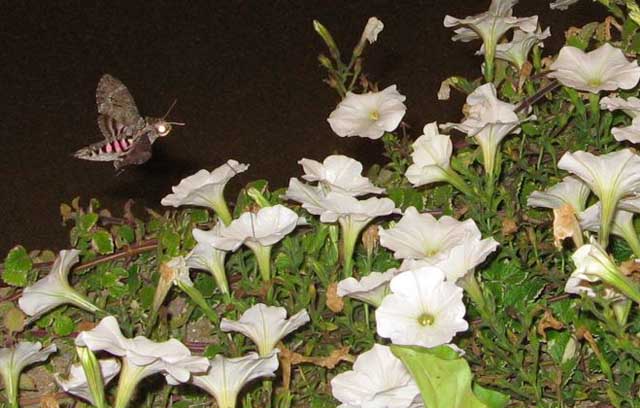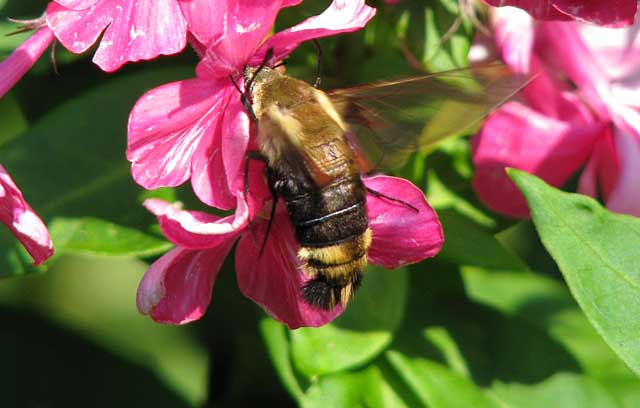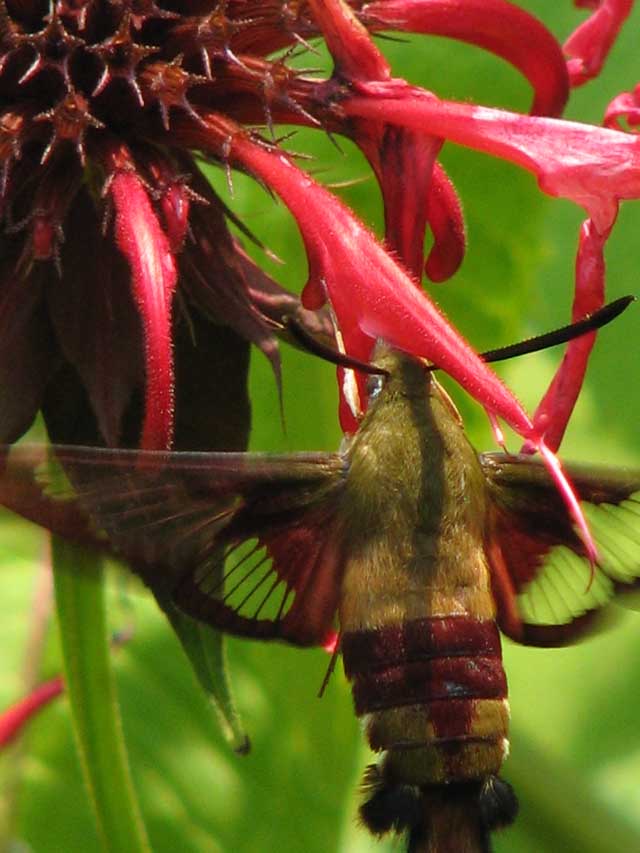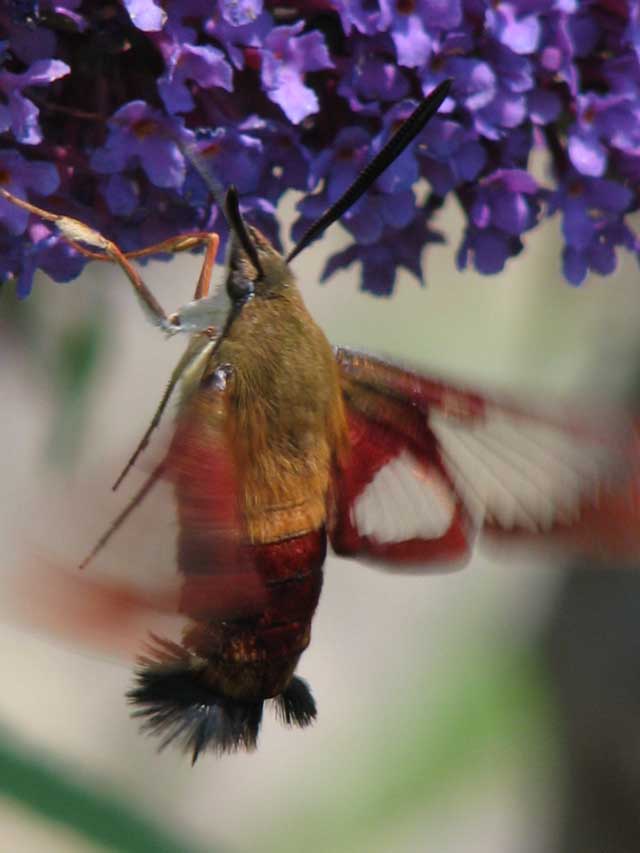Broome County, New York
Sphingidae

|
|
Updated as per personal communication with Cindi Gerard, July 2008 Updated as per personal communication with Anne B. Clark, October 2008 Updated as per James P. Tuttle's The Hawk Moths of North America, October 2008 Updated as per personal communication with Karl A. Wilson, May 26, 2010; June 3, 2010 Updated as per personal communication with Colleen Wolpert, May 27, 2010 Updated as per personal communication with Paula Carman, August 5, 2010 Updated as per personal communication with Karl A. Wilson, (Hyles lineata Vestal, September 15, 2010); June 5, 2012 |

Dr. Clark writes of the Agrius cingulata in flight, depicted top of page, "It was amazing...took in the whole line of petunias along the wall, about 25 meters of them. It would overshoot, flap around a parked car and then find its way back to the flowers."
Agrius cingulata is a non-breeding visitor to New York, most often seen in the fall, often assisted in northward flight by strong winds from further south.

Hemaris difffinis, Endwell, Broome County, New York,
Snowberry Clearwing, July 27, 2008, courtesy of Cindi Girard.

Hemaris thysbe, Endwell, Broome County, New York,
Hummingbird Clearwing, July 20, 2008, courtesy of Cindi Girard.

Hemaris thysbe, Endwell, Broome County, New York,
Hummingbird Clearwing, July 20, 2008, courtesy of Cindi Girard.
Note the variability of the two Hemaris thysbe images above. The lower image shows a reddish cast to the legs and a redder abdomen, both characteristics more typical of the Slender Clearwing, H. gracilis, which Cindi mentions. However, the absence of a red bar on the side of the thorax, and the presence of an irregular inner side of the forewing burgundy outer margin, indicate Hemaris thysbe. Identifications can be tricky.
Another note regarding the distinction between thysbe and gracilis: In H. thysbe, the greenish "fur" of the thorax continues to the sides and meets the thin black line that runs through the eye. In H. gracilis, the greenish "fur" does not extend below the wing juncture with the body. Instead there is a whitish band followed by the characteristic red band along the side of the abdomen.
Forty-six Sphingidae species are listed for New York on the U.S.G.S. website. Not all of the species are reported or anticipated in Broome County (only six are reported on U.S.G.S.: Dolba hyloeus; Ceratomia amyntor; Ceratomia undulosa; Hemaris thysbe; Hemaris diffinis; Darapsa choerilus). It is hoped that this checklist, with the thumbnails and notes, will help you quickly identify the moths you are likely to encounter.
A "WO" after the species name indicates that I have no confirmed reports of this species in Broome County, but I (William Oehlke) expect that this moth is present. A "USGS" indicates the moth is reported on the USGS website and/or in Lepidoptera of North America, #1. Distribution of Silkmoths (Saturniidae) and Hawkmoths (Sphingidae) of Eastern North America, an excellent little booklet available through Paul Opler.
Please help me develop this list with improved, documented accuracy by sending sightings (species, date, location), preferably with an electronic image, via email to Bill Oehlke.
Visit Sphingidae of the Americas to access similar Sphingidae lists for all US states and counties, all Canadian provinces, Mexico, all Central and South American countries. For many of the US counties there are larvae thumbnail checklists available via the individual state files.
Visit North American Catocala to access pictoral checklists for Catocala (underwing moths) for all US states and all Canadian provinces.
Karl A. Wilson (KAW) has sent a sighting of Deidamia inscriptum, 2006, and has sent additional reports of those indicated by (KAW).
Broome County Recording Sheets: Days 1-16 page 1 A. cingulata to S. cerisyi Days 17-31 page 1 A. cingulata to S. cerisyi Days 1-16 page 2 H. diffinis to S. abbottii Days 17-31 page 2 H. diffinis to S. abbottii Days 1-16 blank Days 17-31 blank |
Enjoy some of nature's wonderments, giant silk moth cocoons. These cocoons are for sale winter and fall. Beautiful Saturniidae moths will emerge the following spring and summer. Read Actias luna rearing article. Additional online help available.
Eggs of many North American species are offered during the spring and summer. Occasionally summer Actias luna and summer Antheraea polyphemus cocoons are available. Shipping to US destinations is done from with in the US.
Use your browser "Back" button to return to the previous page.
This page is brought to you by Bill Oehlke and the WLSS. Pages are on space rented from Bizland. If you would like to become a "Patron of the Sphingidae Site", contact Bill.
Please send sightings/images to Bill. I will do my best to respond to requests for identification help.
 Show appreciation for this site by clicking on flashing butterfly to the left. The link will take you to a page with links to many insect sites. |